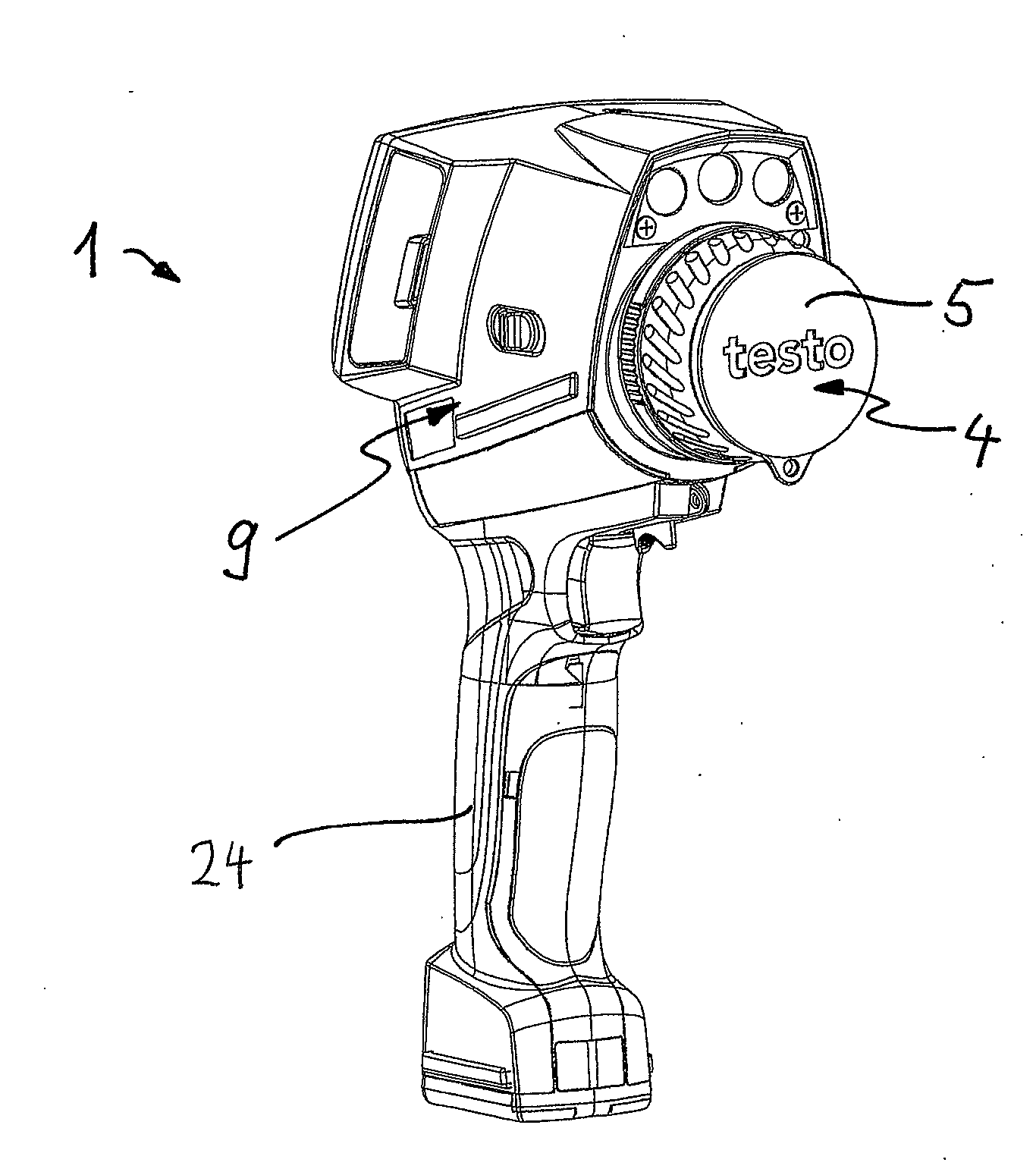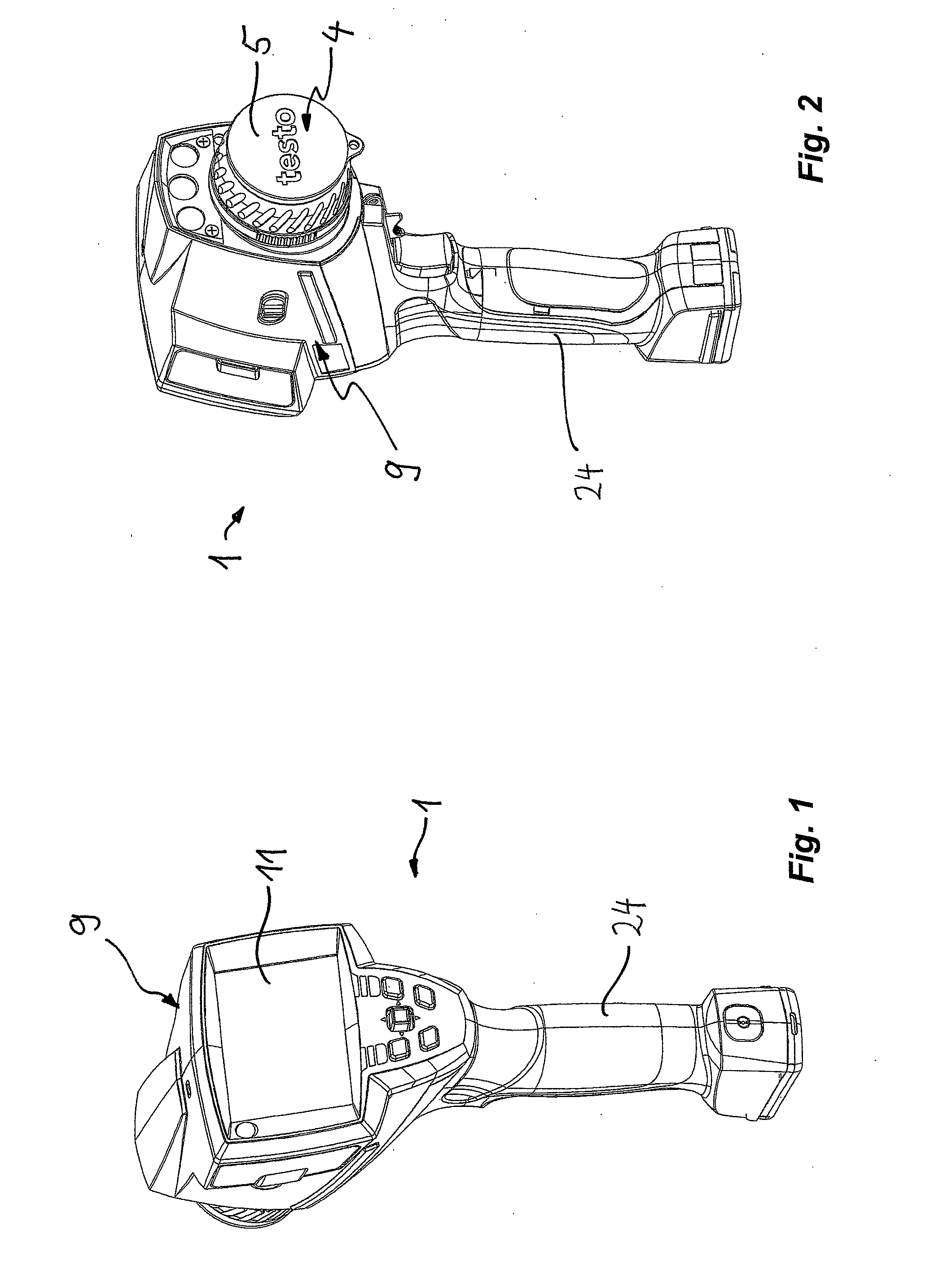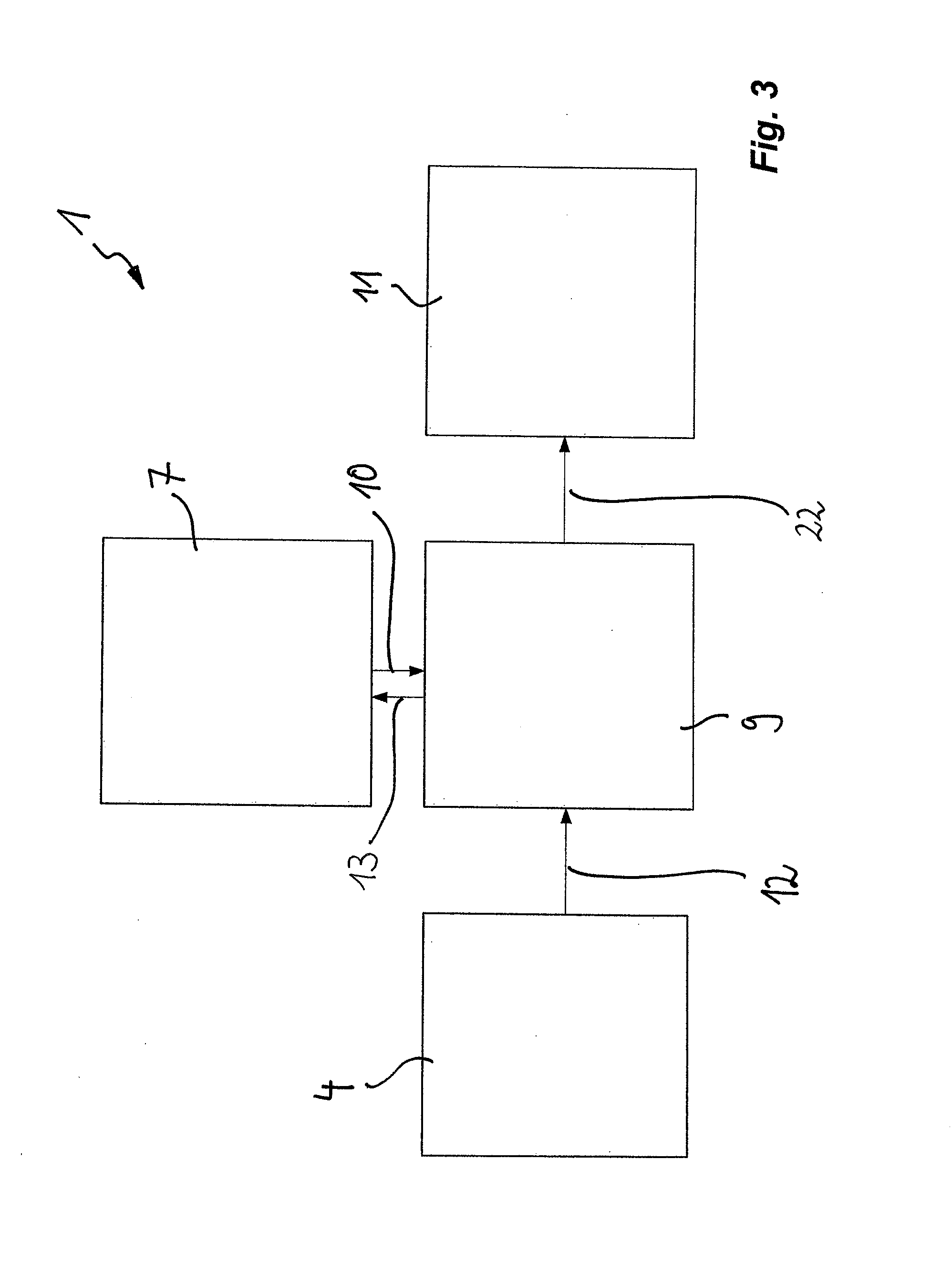Method for the extraction of an ir-image and thermal imaging camera
- Summary
- Abstract
- Description
- Claims
- Application Information
AI Technical Summary
Benefits of technology
Problems solved by technology
Method used
Image
Examples
Embodiment Construction
FIGS. 1 and 2 show a thermal imaging camera marked 1 in its entirety, which is embodied to perform the method according to the invention.
As explained in greater detail in the following, using the method according to the invention an IR-image 2 shown for example in FIG. 7 can be extracted from an image sequence of crude IR-images 3 shown exemplarily in FIG. 5 without requiring a shutter commonly necessary in cameras for thermal imaging.
In order to record the crude IR-images 3 the thermal imaging camera 1 comprises, as discernible from the block diagram according to FIG. 3, an IR-sensor arrangement 4, which is arranged behind an IR-optic 5 (cf. FIG. 2).
In the exemplary embodiment, the IR-sensor arrangement 4 comprises a grid-shaped arrangement of micro-bolometers. This arrangement comprises considerably more micro-bolometers than shown in FIGS. 5 through 7 to illustrate the principle of the invention.
The IR-sensor arrangement 4 therefore provides crude IR-images 3, which are filled wi...
PUM
 Login to View More
Login to View More Abstract
Description
Claims
Application Information
 Login to View More
Login to View More - R&D
- Intellectual Property
- Life Sciences
- Materials
- Tech Scout
- Unparalleled Data Quality
- Higher Quality Content
- 60% Fewer Hallucinations
Browse by: Latest US Patents, China's latest patents, Technical Efficacy Thesaurus, Application Domain, Technology Topic, Popular Technical Reports.
© 2025 PatSnap. All rights reserved.Legal|Privacy policy|Modern Slavery Act Transparency Statement|Sitemap|About US| Contact US: help@patsnap.com



